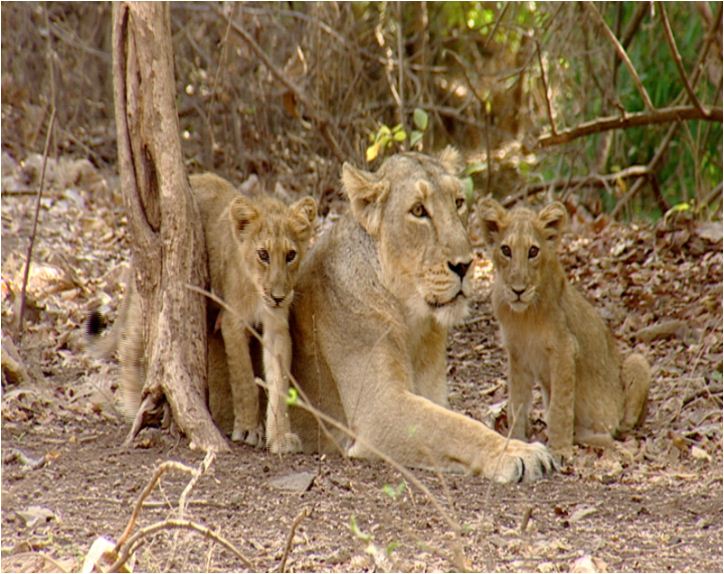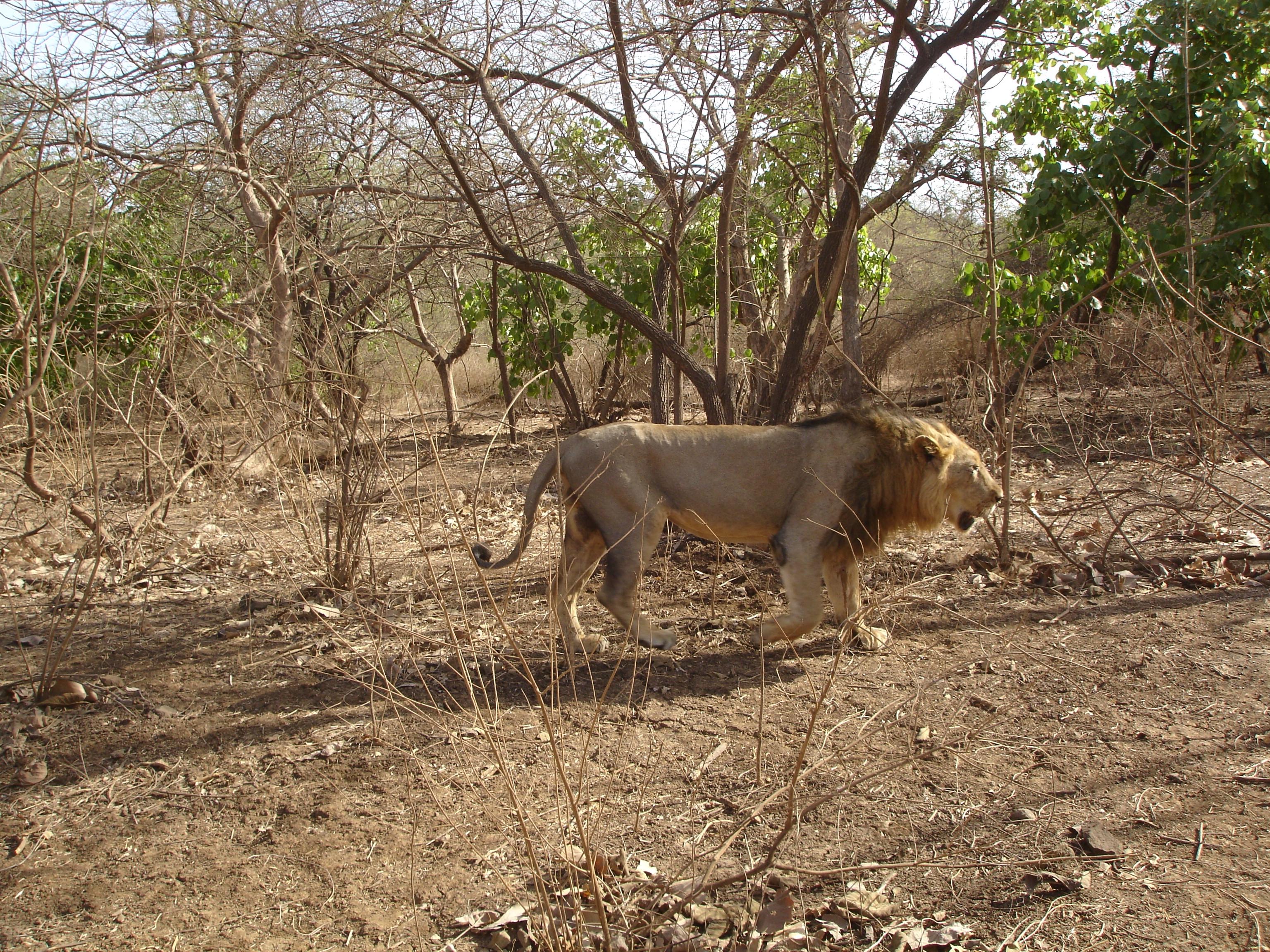
After a gestation period of 116 days, the lioness gives birth to two to four cubs in an isolated place well hidden from other predators. A female in her lifetime may give birth to six litters. Young are produced at an interval of about 2 years. Ordinarily two cubs are born. Beasts of prey are generally born blind and helpless. Some baby lions can see at birth. It is the mother who looks after the cubs marking her scent round the hideout. The cubs remain with their mother for almost two years.
The period of lactation in lionesses is not defined but before they are weaned they begin to scrape off fragments of flesh from prey the mother brings home. In playing with their parents or amongst themselves they learn the art of hunting and may independently hunt only when about two years old. Cub mortality rate is high in the first six months. Often a new male lion will kill and eat cubs of lionesses sired by other males. This reinitiates estrus in the lioness which becomes then available for mating.
Lions are a social species and capable of transmitting behavioral traditions from one generation to another and if the mother is a man eater, man eating is one of them. Man eating is rare in the Asiatic lion. Severe droughts coupled with scarcity of ungulates and domestic cattle have earlier forced the lions to enter human settlements and lift children and adults as opportunist hunters. Killing has also been self defensive.
The canines of the lion are bigger than that of a tiger. This enables it to sink deep into the throat of its victim almost up to six times its body weight.
The thick scrub forest and a shortage of prey do not allow the Asiatic Lion to hunt in prides. The Asian lion often stalks the prey individually. Ambushing followed by a small sprint is preferred.
Both sexes participate simultaneously in eating as against the African custom of first allowing the lion to have his share. An adult lion may consume 10 to 20 kg of meat. During difficult times it can go without food for more than 10 days.
The now peaceful coexistence of the Maldharis, the Siddis and the Lions is a unique example on earth. The Lions of Gir are remarkably fearless of man and allow humans to come close.
The presence of human population and livestock in and around the forest together with a reduction I genetic quality in the lions has pushed the species to the point of extinction. There are just a little over 400 of these magnificent animals left in the wild. The loss of habitat is forcing some to leave the forest. This results in man animal conflicts. Confinement within a 1400 sq. kms. area shared with humans and livestock makes them vulnerable to epidemics which could wipe out the entire population within a month. In this the Asian lion is more critically placed than the African.
Conservation thrusts have been on relocating the maldharis, creating water holes, introducing native plant species, conducting a wild life census every five years and returning lions that have strayed out of the park to the interiors. Compensation for loss of cattle is also suitably managed.
The lions at Gir need more space and relocation. The relocation is essential to prevent the species from any epidemic triggered extinction.
Despite the threats the Asiatic Lions do exist in the Gir even in the 21st century. The population is expanding and India and the world can still be proud of Gir as the last refuge of Panthera Leo Persica, the Asiatic Lion.
